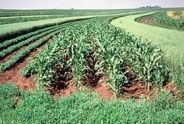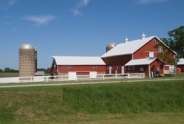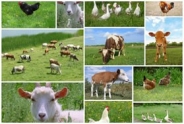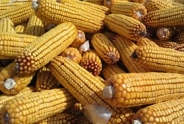Hardware Disease of Cattle, by Dr. Bonnard Moseley

Hardware Disease of Cattle
Bonnard L. MoseleyCollege of Veterinary Medicine
Hardware disease is produced by a sharp object that pierces the stomach wall and gains access to the heart.
A sharp object, such as a nail or piece of wire, may perforate into the heart sac. The object lies originally in a chamber of the stomach known as the reticulum. The reticulum "catches" all heavy objects that are ingested; feed and lighter material pass back into the rumen. When muscles contract, the "hardware" may be forced through the wall of the reticulum, diaphragm and heart sac.
Hardware disease is a common term used for traumatic gastritis and traumatic reticulitis.
From 55 to 75 percent of the cattle slaughtered in the eastern United States have been found to have hardware in the reticulum. However, no damage or perforations of the reticulum was evident.
Hardware may be present and yet produce no damage to the digestive system. Baling twine has replaced baling wire to a great extent, decreasing the noted frequency of hardware disease.
During pregnancy, the rumen and reticulum are displaced forward. At the time of calving, forceful abdominal movement may cause the initial perforation or movement of the hardware into the heart. Older cattle are more often affected with the condition than young ones.
Clinical Symptoms and Diagnosis
You may notice that the cow has a poor appetite, is somewhat depressed, and is reluctant to move. Cattle seem to have indigestion and show signs of pain when defecating.
If perforation of the heart has occurred, fluid, due to infection, may accumulate around the heart and produce abnormal heart sounds. The brisket may be quite flabby due to a large amount of fluid in it.
The cow may also be bloated. These symptoms may subside or disappear within one to seven days, but may reoccur shortly afterwards.
If the cow is slaughtered and the reticulum and heart carefully examined, it may be possible to find a nail or wire protruding through the wall of the reticulum into the heart. However, the hardware may have been completely digested over a period of months and thus not be present.
Sometimes abscesses or adhesions may be present between the reticulum and diaphragm, indicating a perforation had been present. Normally, the reticulum and diaphragm are not bound to one another.
Treatment
If hardware disease is diagnosed by a veterinarian, and the animal has little or no value other than for market prices, slaughter may be recommended. If the animal is for breeding purposes or is a dairy cow, several treatments may be beneficial.
Elevating the forelimbs 6 to 8 inches with a platform may stop forward movement of the nail or wire from the reticulum. This is a slow process; the limbs should be constantly elevated for 10 to 20 days. Antibiotics will help limit the spread of infection.
If the animal is quite valuable, rumenotomy may be recommended. This procedure involves a surgical approach to the interior of the reticulum. A surgical incision is made alongside the last rib, then the hand is extended behind the ribs to the junction of the reticulum and diaphragm.
Foreign objects, adhesions, etc., may be palpated. If a foreign object is palpated, an incision is made into the ruminal wall. The object is then removed manually from the reticulum.
Prognosis
Prognosis is the prediction of the final outcome of the disease. The prognosis in hardware disease varies with the amount of infection present, how long the condition has been present, and the individual animal. The attending veterinarian considers several factors before making a final prognosis. As a general rule, 60 to 75 percent of affected animals can be returned to useful function if the disease is detected and treated early in its course.
Prevention
Using magnets in the reticulum has become a popular preventive routine for hardware disease, especially in the dairy breeds. The magnet is administered much like a large bolus or pill, with a stomach tube or balling gun.
The magnet simply keeps foreign metallic objects adhered together in a ball, reducing the chances of penetrating the reticulum. Of course, the best preventive measure is keeping feed bunks, pastures, cow lots, etc., free of potentially hazardous objects.
Upcoming Events
Memoir Reading: Barn Gothic
December 4, 2025
Bath, NY
Barn Gothic is an elegy for family farmers and an intimate portrait of three generations laboring to be fathers and sons while their livelihood falls apart. Beautifully told with a farmer's restraint and a poet's grace, it is a story of personal loss amid corporate corruption and of finding a way forward when everything you know disappears.
NY Small Farms Summit 2025: Stronger Together
December 5, 2025
Alfred, NY
We hope you will join us on December 5th for the 2025 New York Small Farms Summit! This is an opportunity to meet other farmers and ag supporters, learn about research and education projects, and set priorities for future efforts to grow small farm success.
At the Allegany County site, we will focus on giving trees a chance and how trees build resiliency on small farms. Whether attracted to fruit, nuts, vegetables, fodder or shade, trees can be an integral part of a successful farming system. Join us as we explore the opportunities for resiliency that come from adding tree crops or managing wooded areas of your farm for agroforestry or silvopasture systems.
Crops, Cows & Critters - Southwest New York Dairy, Livestock & Field Crops Newsletter Sponsorship
December 19, 2025
Our two forms of publications feature research-based and timely information from our four specialists, listed to the right, along with local event notifications and Cornell University outreach. This information is provided to participants who range from dairy, livestock, and field crops producers to agricultural suppliers and consultants.
Weekly Email Update: Shared with 625+ households who have signed up with our program.
Monthly Paper Mailer: To reach our stakeholders and farmers who lack internet access, we send out a monthly mailer where your company's logo and contact information would be featured with a mailing list of 330+ households.
If you sponsor our weekly and monthly publications you reach approximately 955 households.
Visit our website to view our newsletters!
Announcements
No announcements at this time.





